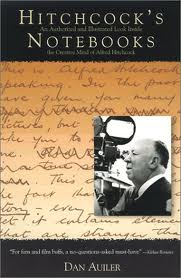The word ‘Maverick’ describes Ricardo Semler the best. No wonder
his first book is titled as ‘Maverick’.
Maverick! was published in 1993. Since then his Semco companies in
Brazil and two other countries have grown to 3,000 employees and a
turnover of $160 million.
As Semco continues on its growth path, Semler is out there to
redefine the meaning of work and work culture for the 21st
century. He describes this new approach in his second book
‘The Seven Day weekend’.

He sets the mood of the book with a
quirky foreword which ends with
Ricardo Semler signing off ‘Lying in hammock
with a laptop and my little boy, having fed
the ducks in the nearby pond on a Monday
in May 2002’
So why the title The Seven Day Weekend?
He believes that the seven days in the week should be divided
amongst company time, personal time and idleness to provide
a work/life balance. He sees working 9 to 5 Monday to Friday
as military and boarding school mentality. He considers it outdated
for people who live their personal lives freely to have to comply
with company rules during work hours.
He gets you thinking with a few questions right at the beginning
of book.
1. Why are we able to answer email on Sundays, but unable to
go to the movies on Monday afternoons?
2. Why can’t we take the kids to work if we can take work home?
3. Why do we think the opposite of work is leisure, when in fact
it is idleness?
Semler continues this path throughout the book asking many
questions and answers a few of them. While he does that, he also
presents some insights about his Semco.
For instance, he says” Semco has no official structure. It has no
organizational chart. There’s no business plan or company
strategy – no two-year or five-year plan, no goal or mission statement,
no long-term budget… For a new employee coming in from
Arthur Andersen they paid a handsome salary but did not give
him a desk, or a title, or business cards.”
Here are some more questions from the book that sure does
serve as a guide for anyone interested in making a change to
their worksytle on a personal/organizational basis
Success and Money are Distant Relatives
1. Why do people have to stick to a career choice they made
as an unprepared adolescent?
2. Why doesn’t money buy success if almost everyone
measured their success in cash?
3. Why do billionaires greedily accumulate money,
only to donate it to ethereal concepts such as world peace?
Management By (O)mission
1. Why do we tell our employees that we trust them, then audit and
search them when they go home?
2. Why does our customized and carefully crafted credo look like
everyone else’s?
3. Why do we demand and go to war for democracy as nations, yet
accept with docility that no one has the right to choose their
own bosses?
A Long Line of Pied Pipers
1. Why do we have a flock mentality and follow rams that turn
out to be wolves?
2. Why do we think we are equipped to choose schools, doctors
and mayors, but don’t trust our capacity to lead ourselves at work?
3. Why do we continuously look for saviours and hereos to lead us?
Rambling into the Future
1. Why do we think that the future ‘is in God’s hands’ and then
pre-plan every moment of it?
2. Why do we think intuition is so valuable and unique – and
find no place for it as an official business instrument?
3. Why do we agree that living well is living every moment,
without reinforcing parst or future – but then spend most of
our work lives dealing with historical data and future budgets?
At times the concept seems a little out of hand but as you read
the book, slowly a pattern emerges.
In this connected world, when you are a click/call away from work,
why can’t you be doing what you want and make your work a part of it
than the other way around.
In short from a work-centric/company-centric you endeavor to
become a person-centric/passion-centric person.



